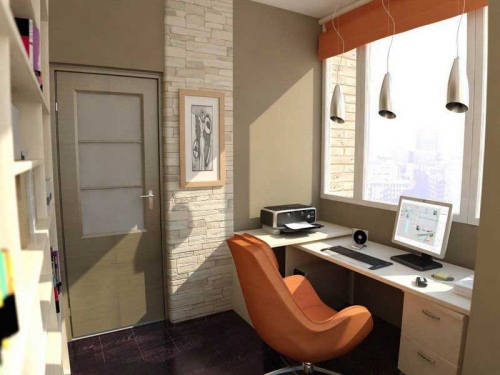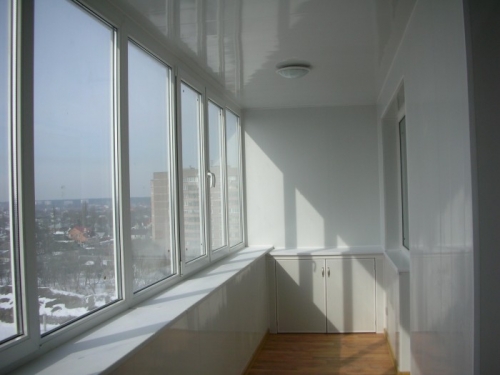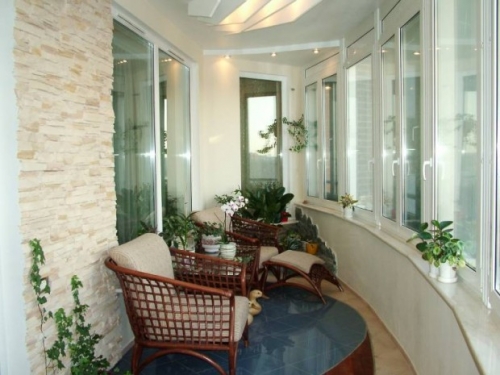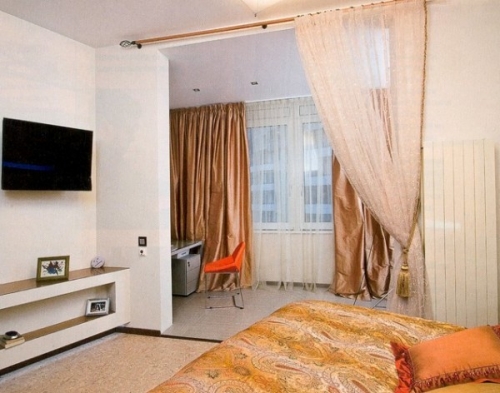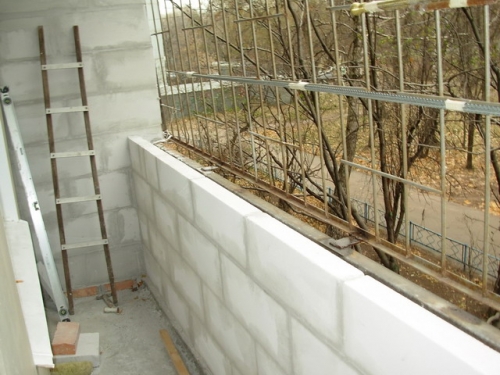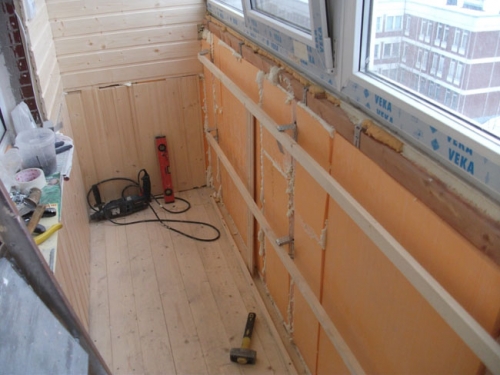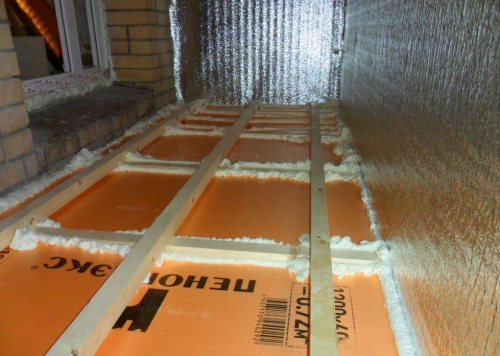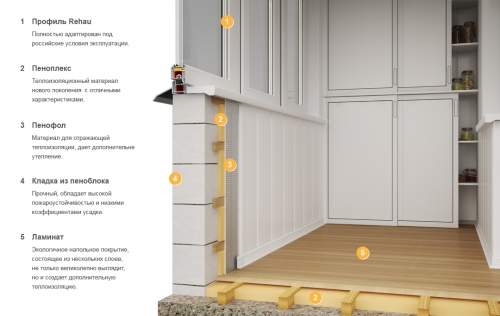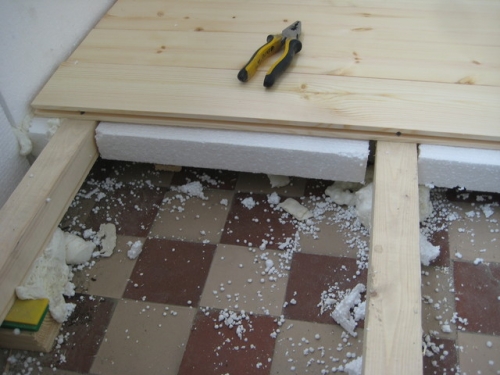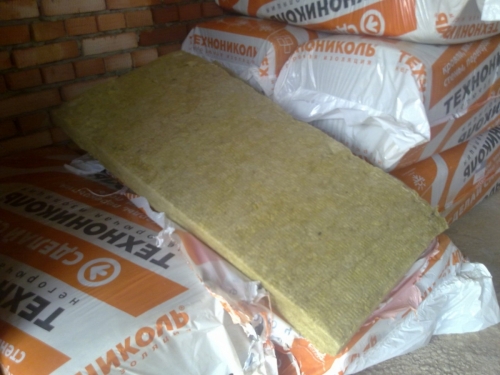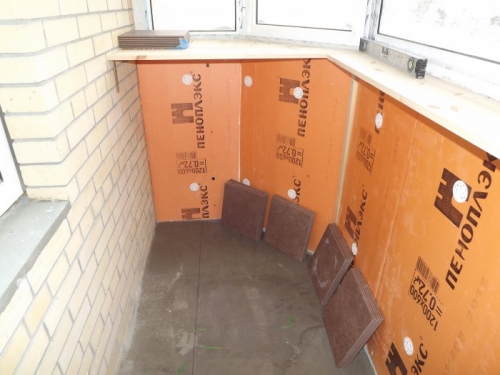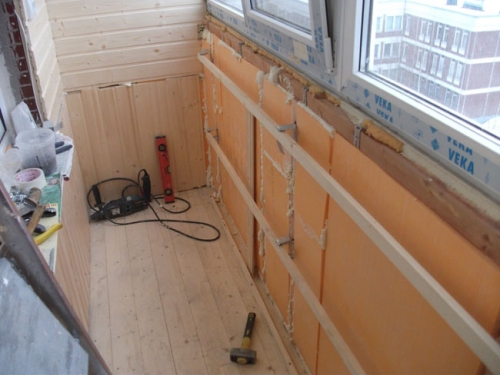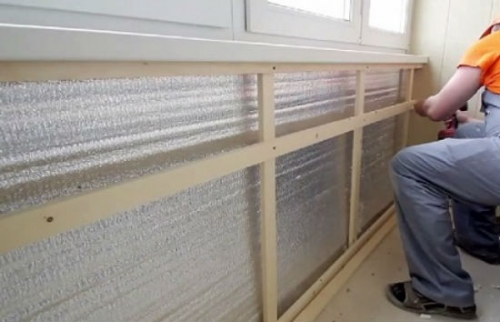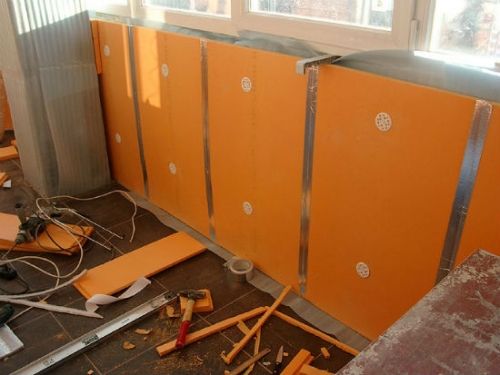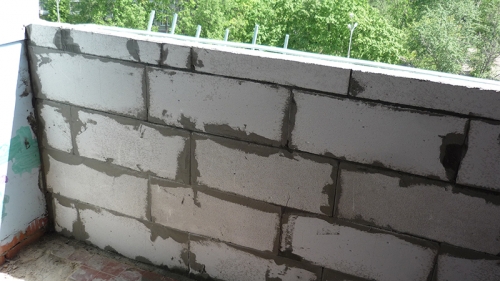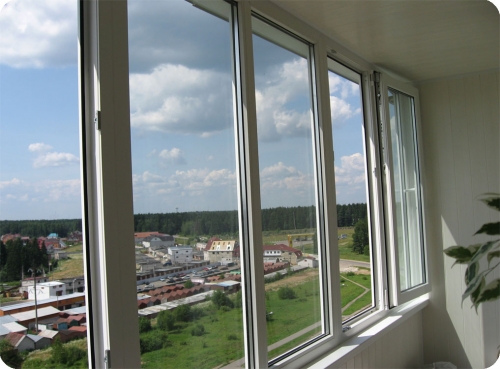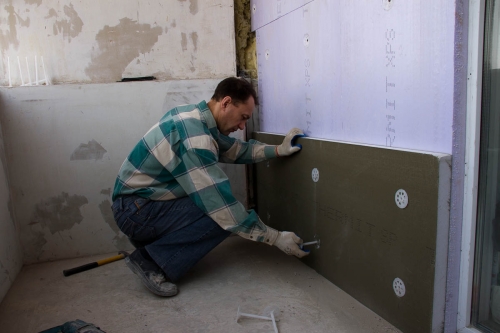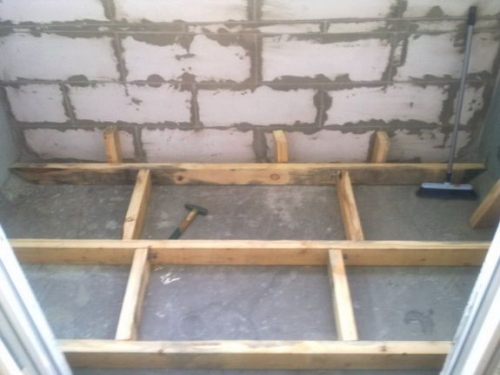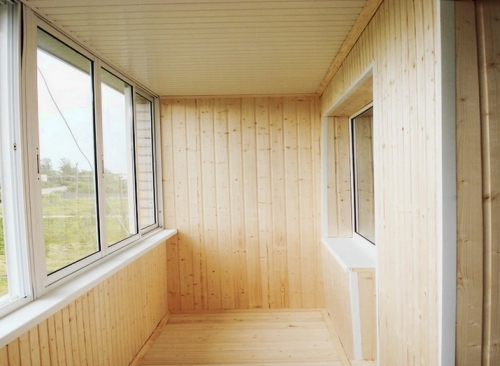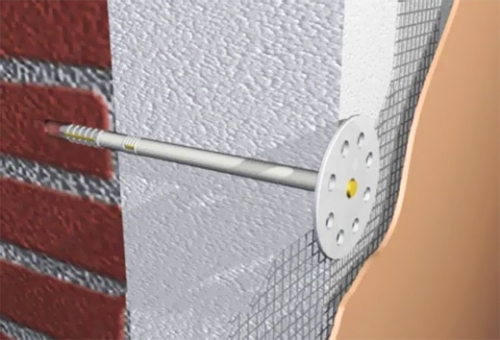What does loggia mean to you? For some, this is just a place to store old things or ...
|
|
The sewage clogging occurs even with the most accurate use. This is a big... |
They start choosing a plinth when the flooring is ready, because these products ... |
Tips on how to insulate a loggia with your own hands
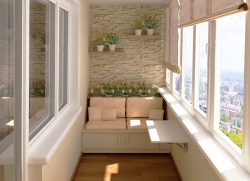
Due to the fact that the idea to transform the loggia into an additional dwelling sooner or later visits each owner of the apartment in a multi -storey building, the relevance of the question: how to properly insulate the loggia with your own hands? There is no doubt. Having insulated the loggia with your own hands and turning a low practical room into a full -fledged room or part of it, you not only get rid of dampness and drafts, but also increase the useful area of \u200b\u200bthe apartment. The prospect of expansion of the living space is very attractive to owners of both small-sized Khrushchevs and spacious apartments in new buildings, which gradually began to lead to the eradication of the habit of keeping unnecessary things that can once be useful, reminiscent of itself since Soviet times. But, despite the prevalence of this idea, it is not always realized, which is associated with common myths about the high cost and complexity of the process, as well as the impossibility of its independent implementation due to ignorance of technological nuances. In this article, we will try to dispel all the imposed prejudices, and also tell you in detail how to insulate a plastic loggia with your own hands.
Content
- DIY insulation with your own hands: necessity or excess?
- What is necessary to remember in the process of insulation of the loggia?
- Materials for insulation of the loggia: Brief description
- Materials and tools for insulation of loggia
- Lodge insulation guide: sequence of actions
DIY insulation with your own hands: necessity or excess?
What is the essence of the motivation of people who warm the loggia? This is mainly due to two reasons: the insulation of the loggia is an intermediate stage in the insulation of the entire apartment or the fundamental event of the alteration of the loggia previously used as a pantry, in a living or working room. The effectiveness of insulation of the loggia or balcony depends not only on the severity of compliance with its stages and the thermal insulation materials used, but also many other factors that do not always pay due attention. Among the parameters that especially deserve attention, it is necessary to note the side to which the loggia, building materials used in the construction of the house, as well as the presence of glazing of neighboring loggias, are released.
The insulation of the loggia is not a necessity and is determined by your individual preferences. The loggia does not need to carry out thermal insulation measures if you plan to use it only as a warehouse. But if by using the loggia you dream of implementing certain design projects, of which there are a huge number, even with all the desire you cannot neglect its insulation, since it not only helps to reduce heat loss, but also prevents the penetration of noise, dust and exhaust gases into a living room . The latter is especially relevant for those who live in apartments whose windows overpoints characterized by intensive traffic and central streets.
When is the need to warm the loggia?
This issue is of particular relevance if you decide:
- equip a greenhouse or a winter garden on the loggia;
- re -equip the loggia under the gym, installing several simulators there;
- put a coffee table and ultramoded chairs from a rattan on the loggia:
- combine the loggia with the adjacent room, since in case of neglect of insulation, in winter the outer wall will be constantly covered with condensate, which will contribute to the formation of mold, and the temperature in the room will be stably low.
What is necessary to remember in the process of insulation of the loggia?
When planning the insulation of the loggia, remember that the project of loggias and balconies was originally developed in accordance with the requirements for cold rooms, and their walls and ceilings do not prevent the penetration of cold air inside. In this regard, remember that the technical errors made in the process of insulation can lead to the fact that pairs leaving the premises can fall under the insulation, which will lead to the formation of condensate. This can cause free freezing in the winter and the formation of ice, as well as the appearance of mold on your and neighboring walls, which is not compatible with the concept of comfort. To prevent this, you need to take care of the tightness of insulation, in which high -quality thermal insulation materials will help you.
Given the importance and technological complexity of the insulation of the loggia, we clarify that the installation of double -glazed windows on the loggia and the elimination of all visible cracks using mounting foam does not provide the temperature on the loggia to comfortable or as close as possible numbers to them. To achieve the desired effect, it is necessary to insulate the loggia, consisting of several stages:
- Installation of energy -saving glazing of the loggia, which implies the installation of double -glazed windows, and insulation of the parapet;
- Preparation of relevant documents confirming the permit for redevelopment (unification of the loggia) and, in fact, its conduct, as well as the lining of the loggia with waterproofing material;
- Floor insulation on the loggia, which can be implemented in several ways described later;
- Warming the walls and ceiling of the loggia.
We warm the loggia with our own hands photo
Materials for insulation of the loggia: Brief description
Currently, the market presents an extensive line of insulation, which can be selected for insulation of the loggia. Among such a variety, one can find the simplest materials and modern high -tech foamed heaters. Given the small dimensions of the balconies and loggias, the issue of saving space is especially relevant, and therefore, experts recommend preference to thin and light materials with a compact structure. In most cases, the most suitable insulation is considered up to 3 cm thick, however, in the case of combining the loggia with a room or kitchen, the thickness of the insulation increases to 5 cm.
Consider how to insulate the loggia inside with your own hands:
Extruse polystyrene foam, also known as Penoplex - a material that is characterized by increased thermal insulation characteristics, moisture resistance and efficiency. The ease of transportation, cutting and subsequent styling also complement the list of its advantages;
StyrofoamThe material, which, despite the fairly frequent use on construction sites, is fragile and short -lived. Of its main advantages, low thermal conductivity, democratic cost and compact dimensions, namely small weight and small thickness can be distinguished. As for the shortcomings, they also have a place to be. Under the influence of a frequent change in temperature and humidity, the foam exploited for several years can turn into granules;
Glass wool and mineral woolsupplied in rolls or mats, are characterized by lower thermal conductivity. The thickness of the material is variable and is in the range from 20 to 200 mm. When planning to lay these thermal insulation materials, be prepared for the fact that in the process of work you will need special protective equipment for special costumes and respirators. Among the shortcomings of the material, the loss of thermal insulation properties when moisture enters;
Materials characterized by the presence of a foil layer. Polistyle foam, polyethylene foam and mineral wool are far from a complete list of materials that a metallized coating can be applied to. The meaning of its application is that when contacted with foil coating, the air does not cool, which helps to maintain heat and reduce the thermal conductivity of the material acting as a base. Thus, the foil, performing the function of the heat reflector, successfully copes with this task. The advantage of materials with metallized coating is the lack of the need to lay waterproofing materials. Materials characterized by the presence of a metallized coating must be straightened along the entire length and fixed using the rails.
Among all of the above materials, experts recommend that you prefer foam polystyrene, whose layer, being duplicated by foil with foamed polyethylene, will create a vapor barrier effect. Due to the fact that these materials can be of different thicknesses, it is necessary to trace the pattern that can be traced when using them. Its essence is quite obvious and is that the thicker the material used, the higher the level of thermal insulation they provide. To determine the optimal level of thermal insulation, in most cases, you will have to make complex engineering calculations, which are often not possible for beginners. In this regard, experts recommend adhering to the following simple rules:
- If the balcony or loggia, the thermal insulation of which you plan to carry out, are not combined with the room, choose polystyrene foam with a thickness of 3 cm or more, vapor barrier material should not be 0.3 cm thicker;
- If the insulated balcony or loggia is combined with a room, the thickness of the polystyrene foam used should be more than 5 cm, and the vapor barrier layer with a thickness of 0.5 cm.
Important! These rules are relevant only if your apartment has no problems with the heating system, the installation of windows is made in accordance with universally recognized rules, there is a source of heat on the loggia, and your place of residence is the middle strip of Russia.
Before considering how to insulate the loggia with a foam with your own hands, we denote its main advantages:
- One of the lowest thermal conductivity coefficient among other thermal insulation materials;
- Environmental cleanliness of the material;
- Zero level of water absorption;
- Minimum vapor permeability of the material, which is especially true when using it as an internal insulation;
- High compression strength;
- The simplicity and ease of installation measures.
Materials and tools for insulation of loggia
From the previous chapter, it becomes clear that the materials for insulation of the loggia are selected so that in the process of its operation there are no problems with constantly formed condensate. To do this, the insulation used must have moderate moisture resistance, breathability and low thermal conductivity that affects the choice of its thickness.
The main materials that you will need when conducting the heat -insulating measures on the loggia:
- A mixture for leveling the floor;
- Wooden rails;
- Materials or mixtures for waterproofing;
- Thermal insulation material;
- Material for cladding;
- Glue and mounting foam;
- Self -tapping screws characterized by a wide hat, nails and dowels.
- Depending on the finish method you have chosen, additional materials may also be required.
From the tools, prepare the following set:
- Punch with drill;
- Electric drill;
- Hammer and construction knife;
- Building level;
- Spatulas, brushes and rollers.
Lodge insulation guide: sequence of actions
Preparation of the parapet and its insulation
First of all, in the process of insulation of the loggia, it is necessary to assess the state of the parapet, which is an external fence of the loggia. It is he who is the weakest link in insulation, since, in contact with the street, he should simultaneously prevent the penetration of cold air, noise, dirt and dust into the room and, at the same time, effectively skip light. If the external fence of your loggia is represented by iron rods, it is necessary to build a parapet, for which light brick or foam blocks are more often used 10 cm wide. Foam blocks are characterized by small weight and low thermal conductivity, but they are exposed to moisture, and therefore, the structure of foam blocks must be sheathed with siding or galvanized iron. However, the reinforced concrete slab is most often used in the role of parapet. In this case, before insulation of the balcony, it is necessary to lay wide gaps with brick, and narrowly concrete.
Blagia glazing mandatory stage of insulation
Answering the question of how to properly insulate the loggia from the inside with your own hands, we note that glazing is an obligatory stage of its insulation. The glasses of well -known companies or wooden structures are mainly used as glazing materials. The thickness of the double -glazed windows installed on the loggia should be at least 32 mm. Experts also recommend supplementing the installation with expansion profiles necessary for the installation of insulation. Installation of profiles is carried out on both sides and in the upper part of the structure. Having installed energy -saving double -glazed windows, you will see that the loggia has acquired a cozy appearance, but the temperature in the glazed loggia has not changed, and in winter it will differ from street by no more than 2 degrees. In this regard, it is necessary to insulate it, but first we consider the preparatory measures that must be done before its insulation.
How to prepare the loggia for insulation?
If you plan to unite the loggia with the room or expand the doorway, dismantle the old balcony door and windows. At the same time, remember that the unification of the loggia with the room is considered a redevelopment of the dwelling and requires the coordination of all actions with the BTI.
We sequentially describe the actions that must be carried out before the insulation of the loggia:
- Carry out the walls and floor and, if holes are detected, pour them with mounting foam and wait for its complete drying. After that, apply lubricant waterproofing to the lower part of the wall;
- Using cement-sand mixtures, make floor alignment;
- Make waterproofing the floor to protect it from moisture.
- Remove the sheathing of the floor, ceiling and walls of the loggia with waterproofing material, for example, swollen plastic film or roofing material. This is necessary in order to prevent the accumulation of condensate on the surface of thermal insulation material. During the installation of roofing material, it is laid and glued to the base, fixing the joints with a gas burner. An alternative to roofing material and polyethylene film is penetrating waterproofing, which is a mixture of a thick consistency, the application of which is carried out using a roller or brush.
Paul insulation procedure: recommendations of specialists
Given the requirements for the floor on the loggia, namely, it should be warm, light enough and durable, the question arises: how to insulate the floor on the loggia with your own hands?.
There are three options for arranging and insulation of the floor:
- The surface of the floor is covered with expanded clay and equipped with a concrete screed;
- Expanded clay can also be replaced with thermal insulation material, for example, extruded polystyrene foam or pressed foam, the sheets of which are glued to the floor. A gypsum leaf is made on top;
- The arrangement of wooden lag is carried out, in the empty space between which the most preferred insulation is placed. Subsequently, downstone boards are nailed on the lags.
Warming of the walls and ceiling of the loggia
Before answering the question: how to insulate the loggia from the inside with your own hands?, We note that the choice of the method of laying thermal insulation material is determined by the subsequent finish of the walls and ceiling. If you plan to choose plaster and painting as a facial decoration, then experts recommend that you prefer gluing or using plastic mounts for insulation. If you use a lining or drywall in the process of facial decoration, the installation of the insulation is performed using fasteners.
Consider how to warm the walls and ceiling with a foam.
- The stove of the foam is applied to the insulated wall from the corner and with the help of the electrode, the holes are drilled, which are designed to drive anchors. Experts recommend laying the stoves of the foam, so that they are subsequently located in a checkerboard pattern. A similar laying procedure allows you to improve the thermal insulation characteristics of the material around the entire perimeter of the walls, as well as avoid displacement of plates.
- The next stage of insulation involves the sheathing of walls and ceiling with finishing material, during which you can use moisture -resistant drywall, wooden or rack lining, as well as wall panels. At the same time, it is important to leave a layer of air up to 1.5 cm between the insulation and the facing material, which will allow you to implement a wooden crate attached using screws that perform the function to the frame. The selected facing material is attached to this frame. If you prefer drywall, the joints between the plates are sealed with putty. In the process of finishing the ceiling, give preference to suspended structures under which you can hide the wiring.
- The next step is the laying of the flooring, which can be used by the Eurodoska 4 cm thick. Having laid the wooden floor, many prefer linoleum or carpet. If you are installed by a concrete screed, experts recommend the installation of an electric heating of the floor. Since in accordance with building codes, it is forbidden to derive central heating, heating or electric firewoods are used to heat the floor. In the case of individual heating under the windowsill, you can place a radiator under the windowsill on loggias.
- And in conclusion, skirting boards, sockets and switches are installed.
How to insulate a loggia with your own hands video

